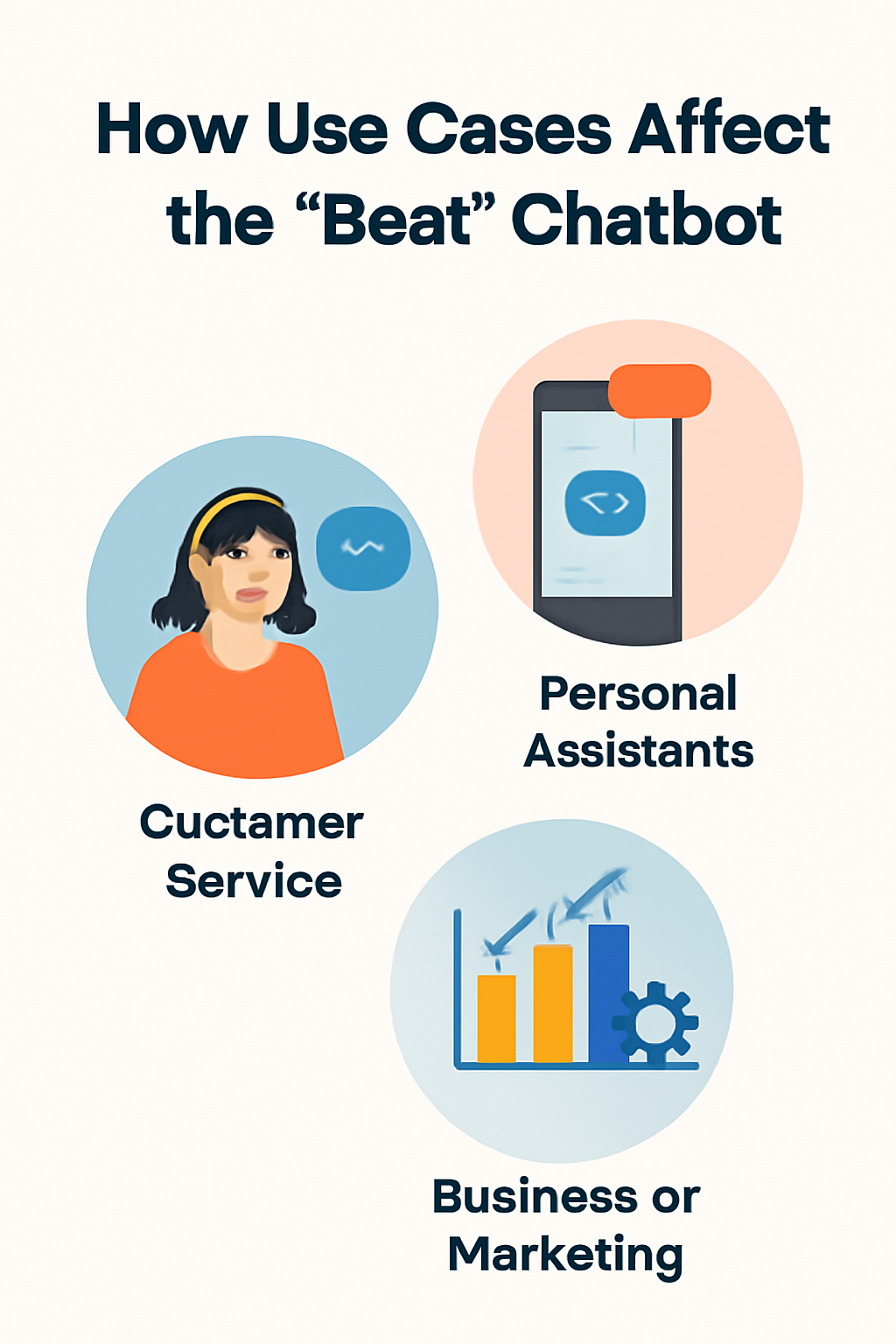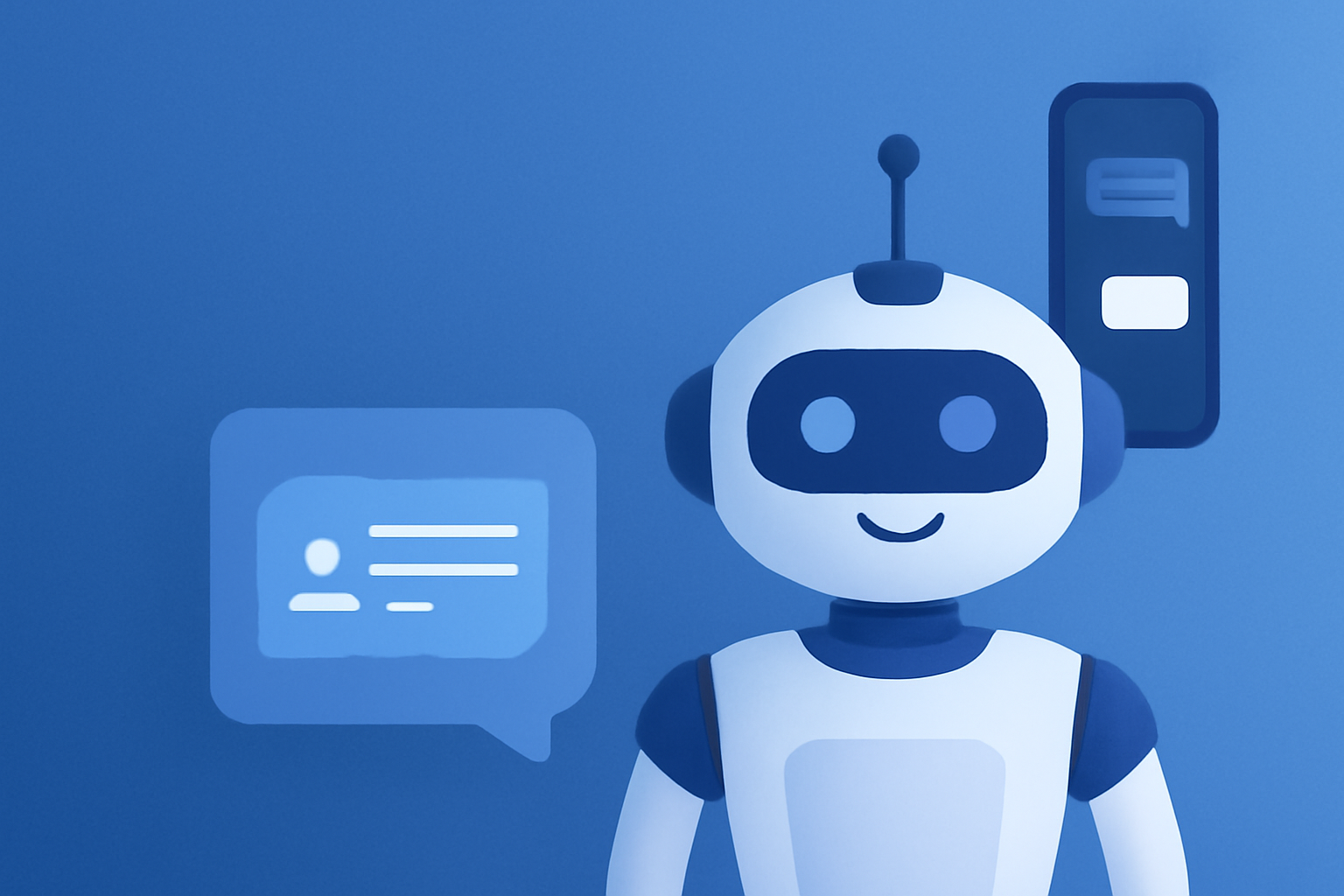Introduction
AI chatbots are becoming more popular every day. From businesses using them to improve customer service to individuals relying on them for daily tasks, these smart tools are everywhere. AI chatbots make it easier to interact with technology through natural language, making conversations feel more human-like.
For businesses, picking the right AI chatbot can help improve customer interactions and save time. Developers need a chatbot that fits well with their systems and is easy to work with. On a personal level, many people use AI chatbots to manage their schedules, find information, and even just have a chat.
In this blog, we’ll look at some of the best AI chatbots in 2025. We’ll compare their features, strengths, and weaknesses to help you decide which one is the best for your needs. By the end, you’ll have a better idea of which chatbot stands out and why.
What Makes an AI Chatbot ‘The Best’?
When choosing the best AI chatbot, there are a few important features to consider. These features help determine how well a chatbot works and whether it meets the needs of users, businesses, or developers. Here are some key factors to keep in mind:
- Accuracy: The best AI chatbots give accurate and helpful answers. They need to understand what the user is asking and provide the right response. Whether it’s answering simple questions or solving more complicated problems, accuracy is very important.
- Ease of Use: A good chatbot should be easy to use. Its design and interface should be simple, so anyone can start chatting without confusion. This makes the experience smoother and more enjoyable for the user.
- Customizability: Sometimes, users or businesses need a chatbot that fits their specific needs. The best chatbots allow for customization, like adjusting how the chatbot speaks or setting up different workflows. This makes the chatbot more useful and personal for different situations.

- Integrations: Many businesses use different tools and software. A great chatbot should be able to work well with these tools, like customer management systems, email, or social media platforms. This makes sure the chatbot can handle tasks and share information across different systems.
- Speed: Quick response times are important. If a chatbot takes too long to reply, users can get frustrated. The best chatbots respond quickly, making the conversation feel smooth and efficient.
- Language Capabilities: The best AI chatbots can understand and reply in multiple languages. This is important for reaching users around the world and helping people from different countries or regions.
Winner: Access 350+ AI tools with Just One Click From One Dashboard.
The Role of Machine Learning and Natural Language Processing (NLP)
Machine learning and natural language processing (NLP) are key to how well a chatbot works.

- Machine Learning helps chatbots get smarter over time. As the chatbot interacts with more users, it learns from those conversations and improves its responses, becoming more accurate and helpful.
- Natural Language Processing (NLP) is the technology that helps chatbots understand and respond to human language. It allows the chatbot to read and understand what the user is saying, so it can reply in a way that makes sense. The better the NLP, the more natural and fluent the chatbot’s responses will be.
How Use Cases Affect the “Best” Chatbot
The “best” chatbot can change depending on how it’s used. For example:
- Customer Service: A chatbot for customer service needs to respond quickly and accurately. It should be able to handle many different types of questions and work with other tools like customer management systems. For this type of chatbot, speed and helpfulness are most important.
- Personal Assistants: Chatbots like Siri or Google Assistant help with personal tasks, like managing schedules or setting reminders. These chatbots should be easy to use, fast, and able to connect with other apps (like calendars or weather reports).

- Business or Marketing: A chatbot used in business should handle a lot of customer inquiries, offer personalized suggestions, and work well with marketing tools (like email or social media). Customizing the chatbot for different types of customers or users will make it more effective.
In the end, the “best” chatbot depends on what you want it to do. Different chatbots are good at different things, so it’s important to think about your needs before deciding which one works best for you.
Top AI Chatbots of 2025
ChatGPT by OpenAI
Overview of ChatGPT’s Features and Strengths
ChatGPT, created by OpenAI, is one of the most popular AI chatbots. It’s built on a powerful language model called GPT-4, which allows it to generate text that sounds natural and fluent. ChatGPT can do many things, from answering questions to helping with creative writing or offering advice. It’s designed to have conversations on a wide range of topics, making it useful for personal, educational, and business use.
Pros
- High-Quality Conversations: ChatGPT is great at having smooth, natural conversations. Its responses feel like you’re talking to a person, making it easy to interact with.
- Wide Range of Knowledge: ChatGPT knows a lot about many different subjects. Whether it’s science, history, or even pop culture, it can provide helpful information on many topics.
- Personalized Responses: ChatGPT can understand the context of your conversation and adjust its answers based on what you’ve said, making the chat feel more tailored to you.
Cons
- Limited Knowledge in Some Areas: While ChatGPT knows a lot, it doesn’t always have up-to-date information. It also doesn’t have access to the internet for live data, so it might miss out on the latest news or trends.
- Struggles with Specialized Topics: ChatGPT might not always give the best answers for very specific or technical subjects, like advanced medical or legal advice, since it’s not an expert in these fields.
Even with these drawbacks, ChatGPT remains one of the best AI chatbots thanks to its conversational style and broad knowledge.
Comparing Features: Which Chatbot Wins in Which Category?
When comparing different AI chatbots, it’s helpful to look at how they perform in important areas like language understanding, ease of use, pricing, and more. Let’s break down how some of the top chatbots do in these categories.
Performance in Language Understanding
- ChatGPT (OpenAI): ChatGPT is great at understanding and responding naturally to questions. It can have smooth conversations on many topics, making it feel like you’re chatting with a person. However, it might struggle with very technical or specialized topics.
- Google Bard: Google Bard also does well with understanding language and pulls information from the internet, which helps it answer questions. But its responses can sometimes feel less conversational compared to ChatGPT.
- Microsoft Azure AI: Azure AI is powerful, especially for business tasks, but its responses might feel more robotic in casual conversations. It’s excellent for tasks that require data, but not as good for natural chats.
Winner: ChatGPT, for its smooth and natural conversations across many topics.
Customization and Easy Integration
- ChatGPT: You can adjust ChatGPT’s tone and style a little, but it’s not as customizable as other chatbots for business-specific needs.
- Google Bard: Bard is easy to use but doesn’t offer much customization. It works well with Google services, but it’s not as flexible for creating tailored experiences.
- Microsoft Azure AI: Azure is the most customizable. It works great for businesses that need deep integration with other tools like Microsoft products, but it requires more setup and is less flexible for personal use.
Winner: Microsoft Azure AI, for its ability to deeply integrate into business systems and offer customization.
Pricing and Accessibility

- ChatGPT: ChatGPT has both free and paid versions. The free version works well, but the paid version gives access to extra features. It’s affordable for most people.
- Google Bard: Bard is free to use, which makes it a good option if you’re looking for a simple, no-cost chatbot.
- Microsoft Azure AI: Azure’s pricing can be expensive, especially for businesses that need more advanced features or use it a lot. It’s better for large companies with bigger budgets.
Winner: Access 350+ AI tools with Just One Click From One Dashboard.
Use Case Adaptability: Personal, Business, Education, Entertainment
- ChatGPT: ChatGPT is very flexible. It works well for a lot of different uses, from personal assistants to helping with education and creative tasks. It’s great for both fun and work.
- Google Bard: Bard is best for answering questions and getting factual information, especially from the web. It’s useful for research but not as good for creative tasks like writing or entertainment.
- Microsoft Azure AI: Azure is designed more for business use. It’s great for customer support, automating tasks, and handling large amounts of data, but it’s not as suited for casual or creative uses.
Winner: ChatGPT, for being adaptable to personal, business, education, and entertainment needs.
User Feedback and Satisfaction
- ChatGPT: ChatGPT gets very positive feedback from users. People like its natural conversation style and how helpful it is in many situations.
- Google Bard: Bard also gets good reviews, especially for its ability to pull useful data from Google’s search engine. Some users feel its responses aren’t as engaging or conversational as ChatGPT’s.
- Microsoft Azure AI: Businesses like Azure because it’s powerful for professional use. However, it’s not as popular among casual users because it’s more focused on business tasks.
Winner: ChatGPT, because it gets the highest ratings for being easy to use, helpful, and fun to talk to.
Summary
Here’s a quick overview of which chatbot wins in each category:
- Language Understanding: ChatGPT
- Customization & Integration: Microsoft Azure AI
- Pricing & Accessibility: ChatGPT
- Use Case Adaptability: ChatGPT
- User Feedback & Satisfaction: ChatGPT
Overall, ChatGPT is the best all-around chatbot for most people because it offers natural conversations, works well across different tasks, and is affordable. However, for businesses that need a highly customizable solution, Microsoft Azure AI is a great choice.
The Future of AI Chatbots: What’s Next?
AI chatbots have already made a big impact, but they’re just getting started. As technology continues to improve, we can expect even more exciting changes. Let’s take a look at what might be coming next for AI chatbots and how they will change the way we use them.
Advancements in AI: What’s Coming Next?
- Multimodal Interactions
- What it is: Multimodal interactions mean that chatbots will be able to understand and respond in different ways, like through text, voice, images, and even video. Instead of just texting, a chatbot might help by showing a video or understanding an image you share.
- Why it matters: This will make talking to chatbots feel more natural. For example, if you ask a chatbot to help with a recipe, it could show you pictures or videos along with the instructions, making it easier to follow.
- Emotional Intelligence
- What it is: Emotional intelligence means that chatbots can understand how you’re feeling based on your words or voice and adjust their responses to match your mood. If you’re feeling frustrated, the chatbot might give a calmer or more helpful response.
- Why it matters: Chatbots will be able to feel more human and comforting, especially when helping with mental health or customer service. They won’t just give answers—they’ll also be able to provide empathy and support.
- Voice Recognition
- What it is: Voice recognition means that chatbots will be able to understand what you say without needing you to type. They’ll be able to recognize your voice and respond to spoken commands.
- Why it matters: This will make interacting with chatbots even easier, especially in situations where typing isn’t possible, like when you’re driving. It will also make chatbots more accessible to people who have trouble typing or prefer voice commands.
Trends in AI Chatbot Development
- More Personalized Interactions
- What it is: As chatbots continue to learn from their conversations, they’ll get better at providing responses that are more tailored to you. They’ll remember your preferences and offer suggestions based on your past interactions.
- Why it matters: Chatbots will feel more like personal assistants, offering advice, reminders, and recommendations that suit your individual needs.
- Deeper Integration with the Internet of Things (IoT)
- What it is: Chatbots will be able to connect with other smart devices in your home, like lights, thermostats, and security cameras. For example, you could tell your chatbot to adjust your home’s temperature or turn off the lights with a simple command.
- Why it matters: This will make chatbots even more useful in everyday life. They’ll help manage not just your schedule or tasks, but also your smart home devices, making everything easier to control.
How AI Chatbots Are Likely to Evolve in Key Industries
- Healthcare
- What’s next: In healthcare, chatbots could help monitor your health, give medical advice, and even track your symptoms or medications. They might connect with devices like fitness trackers to give real-time health advice.
- Impact: Chatbots could help make healthcare more personal and accessible. They could assist with managing chronic conditions, remind you to take medicine, or offer advice when you don’t need to see a doctor.
- Finance
- What’s next: In finance, chatbots could become your personal money manager, helping you track spending, save money, and even give advice on investments or loans.
- Impact: Chatbots could make managing money easier for everyone. They would help with budgeting, offer tips on saving, and even help with taxes or applying for loans, all without needing a financial advisor.
- Education
- What’s next: In education, chatbots could act as personal tutors, answering questions, explaining lessons, and offering study help whenever you need it. They could also help teachers with tasks like grading or tracking student progress.
- Impact: Education will become more interactive. Students could get help whenever they need it, and teachers could focus on more important tasks, saving time and improving learning for everyone.
The future of AI chatbots is very exciting. With improvements like multimodal interactions, emotional intelligence, and voice recognition, chatbots will become even more helpful, accessible, and easier to talk to. As they get better at personalizing responses and connecting with smart devices, chatbots will become an even bigger part of daily life.
In industries like healthcare, finance, and education, chatbots will help make things easier, more efficient, and more personal. As AI keeps getting better, chatbots will keep evolving to help us in new and exciting ways.
Conclusion
Choosing the best AI chatbot depends on your needs. ChatGPT is a great all-rounder for personal use and general tasks, while Microsoft Azure AI excels for businesses needing deep customization. For content creation, Jasper AI is a strong choice, and if you’re seeking emotional support, Replika shines. The best way to find your perfect match is to experiment with different chatbots and see which one fits your goals best!
References:
Chatbot Development in Lebanon: Navigating the Challenges and Opportunities. https://soufan.me/lebanon/chatbot-development-in-lebanon-navigating-the-challenges-and-opportunities/
Articles Archives | Tutorials Bookmarks. https://tutorialsbookmarks.com/category/articles/page/2/
Taxodiary – Language. https://taxodiary.com/tag/language/
Best Practices for Designing AI Chatbot Conversations – tchtrends. https://tchtrends.com/best-practices-for-designing-ai-chatbot-conversations/
How do I get ChatGPT on Chrome- The complete tutorial. https://theparrotgpt.com/blogs/how-do-i-get-chat-gpt-on-chrome-the-complete-tutorial
How To Use ChatGPT For Amazon KDP. https://tchelete.com/how-to-use-chatgpt-for-amazon-kdp/
Free Accounting Software For Solopreneurs and Small Business | Initial Approach. https://initialapproach.io/free-accounting-software-for-solopreneurs-and-small-business/
Drone Case Studies | Mining, Bridges, Construction, Wind Turbines & Telecom – Anvil Labs. https://anvil.so/case-studies
Environmental Monitoring – OpenWing – Agent Store for AIoT Devices. https://openwing.ai/2024/08/environmental-monitoring/
Florez-Revuelta, F., Ake-Kob, A., Climent-Perez, P., Coelho, P., Colonna, L., Dahabiyeh, L., Dantas, C., Dogru-Huzmeli, E., Ekenel, H. K., Jevremovic, A., Hosseini-Kivanani, N., Ilgaz, A., Jovanovic, M., Klimczuk, A., Kuźmicz, M. M., Lameski, P., Luna, F., Machado, N., Mujirishvili, T., . . . Yazici, Z. A. (2024). 50 questions on Active Assisted Living technologies: Global edition. https://doi.org/10.5281/zenodo.13920141

Leave a Reply